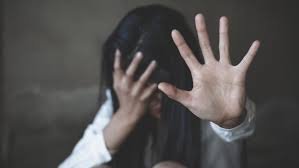
Why In News
- The National Investigation Agency (NIA) has filed chargesheet against 3 Myanmar nationals in major international human trafficking case.
- Those 3 had illegally entered in India with help of traffickers and they were also helping others to enter in India illegally.
Status of human Trafficking in India
- The illicit exchange and exploitation of individuals, usually for the purposes of forced labor, sexual exploitation, or involuntary servitude, is referred to as human trafficking.
- It involves the recruitment, transportation, transfer, harboring, or receipt of individuals through threat, force, coercion, abduction, fraud, or deception for the purpose of exploiting them.
- According to the National Crime Records Bureau (NCRB), India identified over 6,500 human trafficking victims in 2022, with 60% of them being women and girls.
Constitutional & Legislative Provisions related to Trafficking in India
- Constitutional Prohibition: Article 23 prohibits human trafficking and beggar (forced labor without payment).
- Immoral Traffic (Prevention) Act, 1956 (ITPA): This legislation serves as the primary law aimed at preventing trafficking specifically for commercial sexual exploitation.
- Protection of Children from Sexual Offences (POCSO) Act, 2012: Enacted on 14th November 2012, this act is dedicated to shielding children from sexual abuse and exploitation.
- It provides clear definitions for various forms of sexual abuse, encompassing penetrative and non-penetrative assaults, as well as sexual harassment.
- Other Specific Legislations:
- Various other laws target trafficking in women and children including:
- the Prohibition of Child Marriage Act, 2006
- the Bonded Labor System (Abolition) Act, 1976
- the Child Labor (Prohibition and Regulation) Act, 1986
- the Transplantation of Human Organs Act, 1994
- IPC Sections 372 and 373 that address the selling and buying of girls for prostitution.
- Various other laws target trafficking in women and children including:
Major Causes of Human Trafficking
- Poverty and Economic Inequalities: When people are struggling financially, they are more likely to be put in precarious situations where they are easily duped by traffickers into believing they have greater chances.
- Lack of Education and Awareness: People who have not received enough information on the dangers of human trafficking are unable to recognize the strategies traffickers employ, which leaves them vulnerable.
- violence, Instability, and Displacement: When people flee to safer places in search of security or safety, areas impacted by natural disasters, political unrest, or violence provide fertile ground for exploitation.
- societal Marginalization and prejudice: Due to societal prejudice and a lack of support systems, marginalized groups—such as women, children, immigrants, and minorities—are frequently more vulnerable.
- Demand for Low-Cost Labor and Services: Businesses looking for low-cost labor or services may ignore unfair labor practices, which encourages labor trafficking.
- Online Exploitation and Technology: Technological advancements have facilitated online recruitment, making it easier for traffickers to lure victims through various deceptive means.
Way Forward:
Prevention through Education and Awareness:
Increase public awareness through media, workshops, and campaigns to encourage alertness and provide people the tools they need to spot and report human trafficking.
Strengthen Legal Frameworks:
Enforce current laws in an efficient and uniform manner, while fortifying legislation to offer more victim protection and more severe punishments for traffickers.
Give law enforcement organizations the tools and training they need to combat human trafficking and delicately manage victim cases.
Assistance and Rehab for Victims:
Create all-encompassing victim-focused support networks that offer refuge, medical attention, guidance, and career development to those who have survived.
Ensure that programs for reintegration assist survivors in rebuilding their lives and reintegrating into society stigma-free.
International and Regional Collaboration:
Encourage governments to work together to exchange intelligence, information, and best practices for successful cross-border cooperation.
Approve and put into effect international agreements and guidelines designed to combat human trafficking.
Address the Causes at the Root:
Create initiatives for vulnerable groups to empower themselves economically and address poverty and economic inequities.
Promote equality, inclusivity, and social support networks to counteract marginalization and social prejudice.